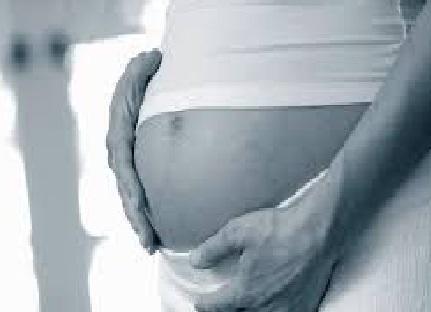DOH alarmed by 'very high’ incidence of childhood pregnancy

Health Secretary Ted Herbosa on Wednesday sounded the alarm over the rising number of pregnancies among children below the age of 15 in recent years.
In an ambush interview, Herbosa said there’s now a “very high incidence” of childhood pregnancy in the country. Citing 2022 data from the Philippine Statistics Authority (PSA), he said that for children under 15 years old, 59 got pregnant per 100,000 population.
Health Secretary Ted Herbosa raises the alarm regarding the “very high” incidence of childhood pregnancy in the country. @gmanews pic.twitter.com/LfXoqpeeVw
— Giselle Ombay (@giselleombay_) November 20, 2024
Herbosa explained that "teenage pregnancy" for those 15 below are considered "childhood pregnancy."
At the height of the pandemic in 2020, PSA’s data showed that among those aged below 15, there were 39.39 per 100,000 people who got pregnant. This grew to 44.06 in 2021, and 59.34 in 2022.
“We have a big problem with teenage pregnancy. Number one, ‘yan ang nagko-contribute sa maternal mortality kasi hindi sila nagpapa-prenatal. Sila ang high-risk sa what we call eclampsia and hemorrhage at childbirth,” Herbosa said.
(We have a big problem with teenage pregnancy. Number one, they contribute to maternal mortality because they don't undergo prenatal care. They are at a high risk of eclampsia and hemorrhage at childbirth.)
“So kung ma-control natin ‘yan [if we control that], we will actually be able to decrease maternal mortality,” he added.
The Health chief also stressed that every childhood pregnancy is considered an unplanned pregnancy, especially among children aged 10 to 16.
He also attributed the rising childhood pregnancy rate to the use of the internet, among others.
“Number one, our children are already exposed to the internet. What we discovered is that internet was a big influence on sexual behavior of our teens. And then there’s peer pressure, of course.” Herbosa said.
“Then the socioeconomic classes. Many in the lower socioeconomic classes, ang gusto ng iba makapag-asawa, makatakas sa poverty ang kanilang family. ‘Yan, social factors, cultural factors… Education talaga,” he continued.
(Many in the lower socioeconomic classes want to get married and for their family to escape from poverty. Those are social and cultural factors. There’s a need to educate them.)
According to PSA, the total number of live births by adolescent mothers (aged 19 and below) rose 10.15%—from 136,302 in 2021 to 150,138 in 2022.
The number of live births from pregnancies among girls aged 14 and below also surged by 35.13% from 2,320 in 2021 to 3,135 in 2022.
Due to this, the Commission on Population and Development (CPD) has been calling for the Senate to prioritize the passage of the Adolescent Pregnancy Prevention Act, a measure seeking to help prevent teenage pregnancy and institutionalize social protection for adolescent parents.
--VAL, GMA Integrated News




